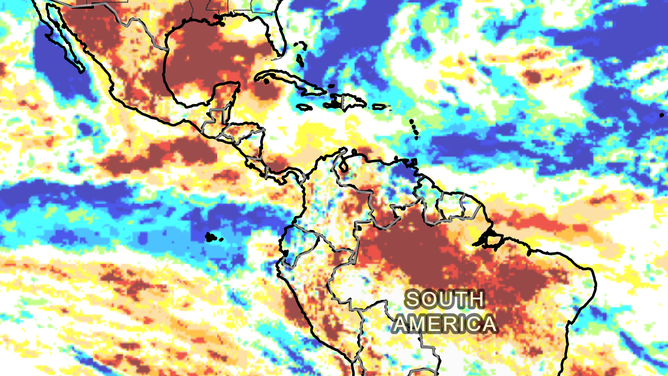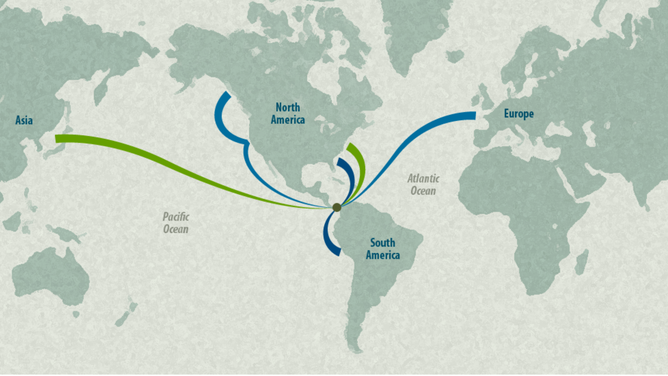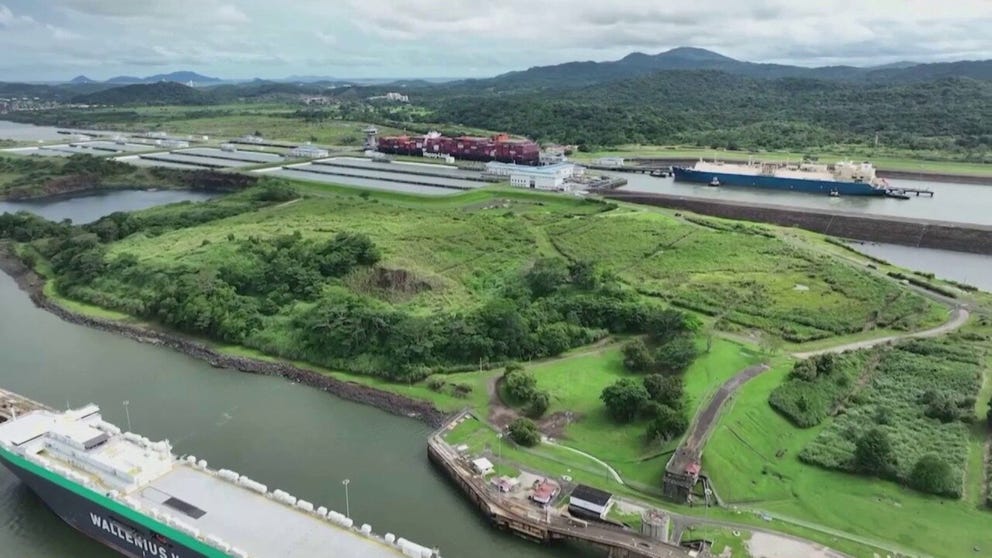Drought forces Panama Canal to reduce major shipping traffic
More than 70% of the cargo that passes through the Panama Canal either heads to or departs from the United States.
Intensifying drought impacting Panama Canal operations
The Panama Canal operates 365 days a year but due to an intensifying drought and low water levels, ship weights and crossings have been reduced to 32 vessels per day according to operators.
PANAMA CITY, PANAMA – A historic drought that has intensified under the weather patterns created by the 2023 El Niño has forced the Panama Canal Authority to increase restrictions on vessels that transit the nearly 50-mile-long waterway.
According to operators, only 32 ships per day are allowed to transit the canal, down from an average of 36 during normal summer operations.
The restrictions on passages have led to bottlenecks of dozens of vessels that are waiting weeks on end in either the eastern Pacific or the southern Caribbean to make the eight to ten-hour trip.
"We’ve had long lineups of ships before. Global events such as climate variability like this year’s, seasonal fog in the Culebra Cut, scheduled maintenance outages, and peak season are the usual causes for increased waiting times. Despite current limitations and measures taken, demand remains high, hence the increased waiting times," the Panama Canal Authority said in a statement.

90-Day rainfall deficit
UPS METEOROLOGISTS WORK TO KEEP AMERICA MOVING
The increase in delays comes at a time when the United States and the world face declining gasoline inventories and a rise in consumer prices ahead of the holiday spending season.
An analysis of agency data showed more than 70% of the cargo that passes through the Panama Canal is either heading to or departing from the U.S.
Many vessels that depart Asia and the U.S. West Coast sail through the canal to reach destinations along the East Coast and Europe.
"Communication is a cornerstone of our relationship with customers. Considering changing circumstances, we maintain an open line of communication to keep our customers informed about booking slot availability. Through regular updates, transparent dialogue, and close collaboration with shipping lines and stakeholders, we strive to manage expectations and provide real-time information that enables our customers to make informed decisions," Ricaurte Vasquez Morales, the Panama Canal administrator, said in a statement.

Common routes through the Panama Canal
(Georgia Tech Panama Logistics Innovation and Research Center)
WHAT IS THE MOST TRAVELED HOLIDAY OF THE YEAR?
Typically, under an El Niño pattern, large parts of Central and South America see reduced rainfall as dry air settles over the region.
So far, there are no indications when the current El Niño event will end, and climate models show the cycle lasting well into 2024.
NOAA previously announced there is a greater than 95% chance that the El Niño will last through February, and the odds that the weather pattern is still around through spring 2024 were estimated to be greater than 80%.
The last significant El Niño event of 2014-2016 lasted around a year and a half before water temperatures in the eastern Pacific fell below thresholds and entered a neutral status.
